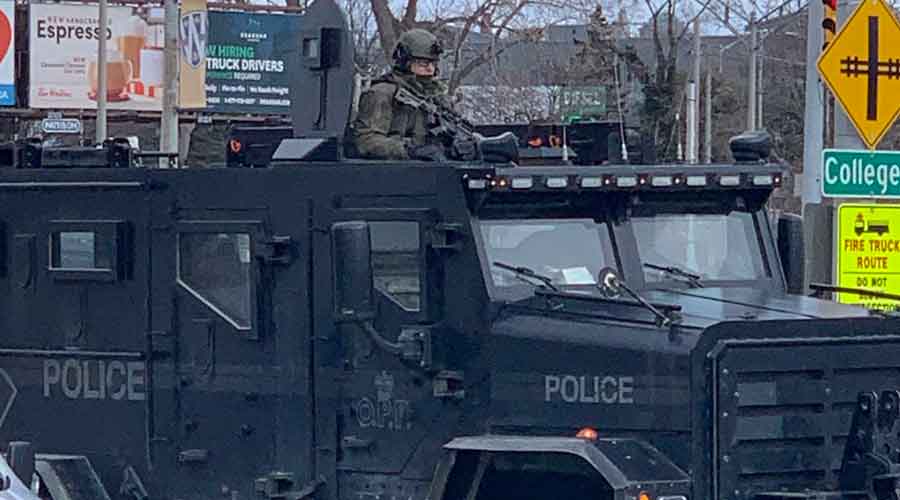After protesters blockaded a critical economic link between the US and Canada for nearly a week, traffic began making its way over the span again early on Monday, providing relief to industries disrupted by the unrest over the country’s anti-vaccine mandate.
The logjam lifted hours after the Canadian police began making arrests near the Ambassador Bridge, clearing a roadway to a border crossing that became one of the most visible sites of an antigovernment protest movement that has roiled Canada for weeks.
“Today, our national economic crisis at the Ambassador Bridge came to an end,” declared the mayor of Windsor, Drew Dilkens.
While the reopening of the bridge that ties Windsor, Ontario, to Detroit has been hailed by some as a victory for a government shaken by the protests, the Canadian authorities continue to face pressure from a movement that appears emboldened by a growing sense of impunity.
In Ottawa, hundreds of truckers have been occupying the area around Parliament Hill for weeks, snarling traffic and disrupting businesses. Virtually unchecked, they have cut off access to the parliament, Supreme Court and the Prime Minister’s office. Their occupation has incited a movement, drawing protesters who flocked to the convoy in a party-like atmosphere. Over time, the protests have spread across Ontario and Canada.
With the government struggling to ease tensions in the capital, officials have been trying to broker a deal for the truckers to pull out of some neighbourhoods. The mayor’s office released an emailed letter dated on Saturday from one of the protest leaders, Tamara Lich, in which she said, “We will be working hard over the next 24 hours to get buy in from the truckers.”
The mayor of Ottawa, Jim Watson, said there had been back-channel negotiations with the truckers leadership to remove their convoys from residential neighbourhoods. But he said they would not be forced from the site of the legislative buildings.
New York Times News Service











